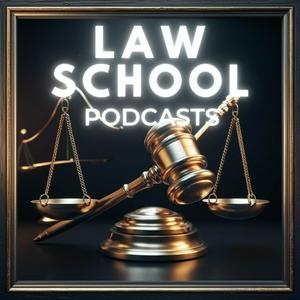Law Review Week: Day Six - Property Law
Understanding Property Law: A Comprehensive GuideThis conversation provides a comprehensive overview of property law, focusing on the fundamental concepts of ownership, rights, and the legal frameworks that govern land use and transactions. It explores how property rights are acquired, divided, and transferred, as well as the implications of landlord-tenant relationships and non-possessory interests. The discussion also addresses the complexities of financing, nuisance, and zoning, culminating in a summary of key takeaways that highlight the essential principles of property law.Property law can often feel like a complex puzzle, but at its core, it's about understanding who owns what, for how long, and under what conditions. This guide will walk you through the essential concepts of property law, from acquisition to conflict resolution.Acquisition and Ownership: Property ownership begins with the concept of first possession, where the first person to capture or control an unowned item gains a property interest. This principle extends to adverse possession, where a trespasser can gain legal title if they meet specific criteria over a statutory period.Dividing Ownership: Ownership isn't always straightforward. It can be divided over time through present estates and future interests, such as life estates and remainders. Concurrent ownership allows multiple people to hold interests in the same property, with forms like tenancy in common and joint tenancy.Landlord-Tenant Law: The relationship between landlords and tenants is governed by leasehold estates, which grant tenants exclusive possession for a period in exchange for rent. Modern law has introduced the implied warranty of habitability, ensuring residential properties are safe and livable.Non-Possessory Interests: Easements, covenants, and licenses allow individuals to use land without possessing it. These interests can be created through various means, including express grants and adverse possession.Land Transactions and Recording: Buying and selling land involves contracts, deeds, and the recording system, which protects bona fide purchasers and resolves priority disputes. Understanding the types of deeds and recording statutes is crucial for navigating land transactions.Conflict Resolution: Property law also addresses conflicts through doctrines like nuisance and zoning. These tools help balance individual property rights with community interests, ensuring a harmonious coexistence.Property law is the foundation of legal relationships, defining how we structure wealth and expectations in society. By understanding its core principles, you can navigate the complexities of property ownership and use with confidence.Subscribe now to stay updated on the latest insights in property law.TakeawaysProperty is a bundle of rights, not a single entity.Acquisition of property can occur through first possession or adverse possession.Ownership can be divided over time through various estates.Concurrent ownership includes tenancies in common and joint tenancies.Landlord-tenant law merges property law with contract principles.Non-possessory interests include easements and covenants.Land transactions involve contracts and deeds, with recording systems to protect buyers.Mortgages serve as security interests in property for loans.Nuisance law addresses conflicts between land use and enjoyment.Zoning regulates land use to balance individual rights with community needs.property law, ownership, land rights, landlord-tenant, easements, mortgages, nuisance, zoning, real estate


